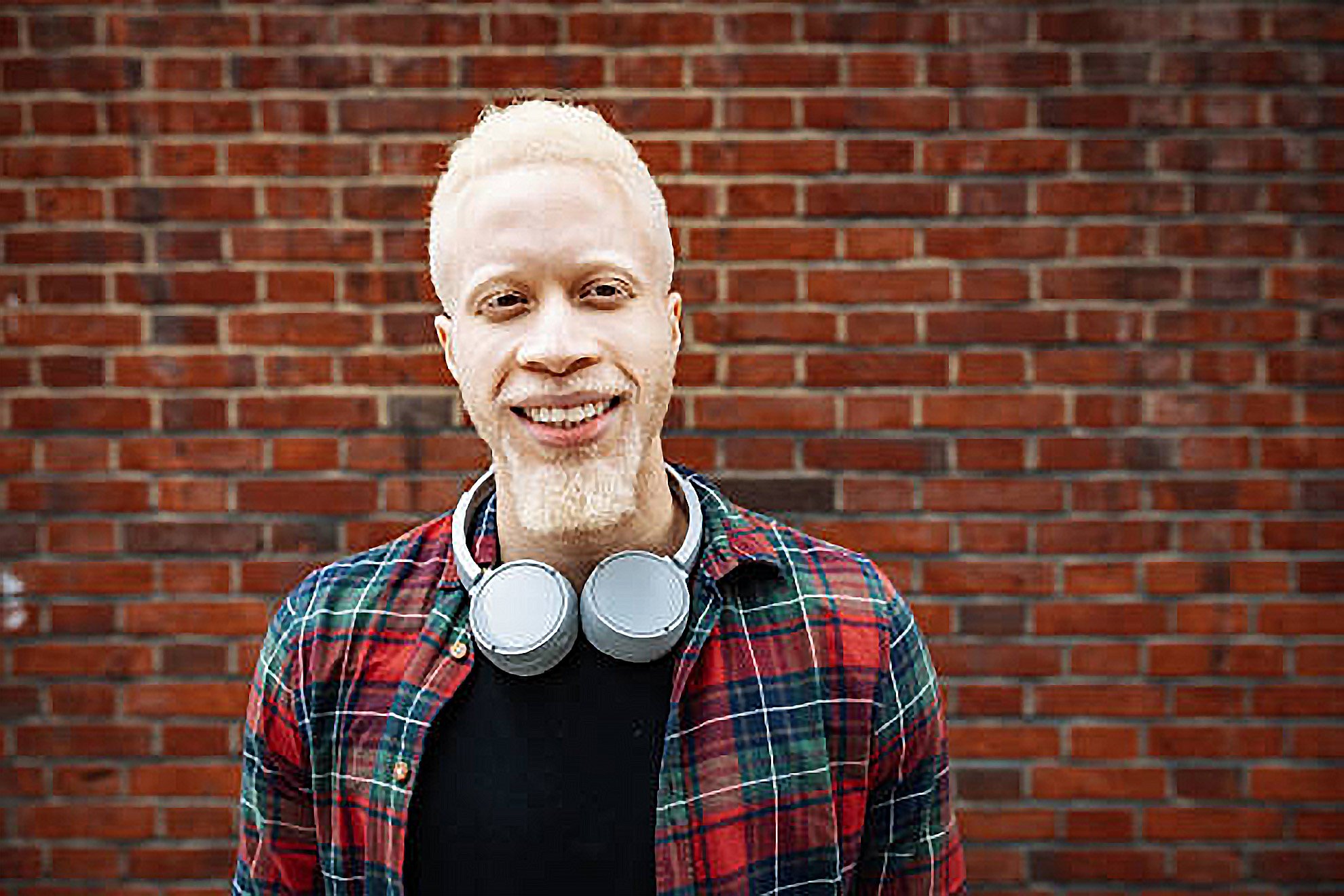
What are the Symptoms and Causes of Achromasia Albinism?
Most people have never heard of achromasia-albinism, but it is a very real condition that affects approximately 1 in every 17,000 people. Achromasia-albinism is a genetic disorder that causes the body to produce little or no melanin. As a result, those affected have very light skin and hair and often experience vision problems. This makes the individual extremely sensitive to the sun and susceptible to developing skin cancer. While there is no cure for achromasia-albinism, there are treatments available to help manage its symptoms.
Achromasia-albinism is a rare disorder. It is estimated that there are about 18,000 to 20,000 people in the United States with OCA. It is more common in certain populations, such as people of African or Asian descent.
It's a disorder that affects the way the body produces melanin
The most common form of achromasia-albinism is Oculocutaneous Albinism (OCA), which means that it affects the eyes, skin, and hair. People with OCA have little or no melanin in their bodies. This can cause vision problems and make the person more susceptible to sunburn and skin cancer.
There are different types of OCA, depending on how much melanin is present in the body. People with complete achromasia have no melanin at all. Those with partial achromasia have very little melanin. And people with albinism have some melanin, but not enough to protect their skin from the sun.
Symptoms can include vision, skin and hair problems
Vision:
If you experience any of these symptoms, see an ophthalmologist or other medical professional immediately. Early diagnosis and treatment are important to prevent serious vision problems.
There are two main types of solar retinopathy: central and peripheral. Central solar retinopathy affects the fovea, which is the center of the retina and the area of sharpest vision. This type of damage can result in a central blind spot and decreased visual acuity. Peripheral solar retinopathy (Usually caused by sun exposure) affects the retina outside of the fovea and can lead to blurry vision, distorted images, or difficulty seeing at night.
Eye color:
Eyelashes and eyebrows are often pale. Eye color can range from very light blue eyes to brown, with eyes changing in appearance as we age - especially on the lid where pigment becomes scarce; this leads some people who experience glare when they look at something directly into an object's eye for too long (a condition called " brief mirror syndrome").
The lack of pigment in your eye's colored part (irises) means they're translucent - meaning you can sometimes see through them and block out some light. This also makes very Light-colored eyes appear as red eyes when under artificial lighting conditions, since these colors don’t mix well with white or yellow rays hitting us perotropically!
Hair:
The range of hair colors is as diverse and expansive as the people who wear them. From very white to dark brown hair, there's a perfect hue for everyone! For those with albinism - a rare condition that affects 1% or less global population- their locks may also be yellow reddish color due to the lack of melanin which gives our skin its natural pigment (and makes us look pretty!)
In addition, early adulthood can cause stains on your strands from exposure work around like swimming pools; however, over time these will get darker.
Skin Color:
The most common form of albinism results in white hair and very light-colored skin which is caused by the lack of pigmentation. Skin pigmentation can range from nearly the same as that parent's or sibling without it, to browns; while there is also a rare variation where individuals have black eyelashes (and sometimes blurry eyes).
Some people with albinism experience skin pigmentation that never changes; for others, melanin production may begin or increase during childhood and the teen years resulting in slight differences.
Different types of albinism
There are several forms of albinism, which are distinguished by their pattern of inheritance and the genes involved. The four most common types are ocular albinism (OA), oculocutaneous albinism (OCA), X-linked ocular albinism (XLOA), and a fourth type known as Chediak-Higashi syndrome (CHS).
1. OA is the most common form of albinism, accounting for approximately 65% of all cases. It is characterized by reduced pigmentation in the eyes, but normal skin and hair color. OA is caused by mutations in any one of several genes involved in melanin production, including the genes for the enzymes tyrosinase (TYR) and P-protein.
2. OCA type, the second most common type of albinism, occurs in approximately 25% of all cases. It is characterized by reduced pigmentation in both the eyes and the skin. OCA can be caused by mutations in any one of several genes involved in melanin production, including TYR, P-protein, and the gene for oculocutaneous albinism type 2 protein (OCA2).
3. XLOA is a rare form of albinism that affects only males. It is caused by mutations in the gene for the enzyme P-protein. XLOA is characterized by reduced pigmentation in the eyes, but normal skin and hair color.
4. CHS is a rare and severe form of albinism that is characterized by partial albinism. People with CHS have white hair, pale skin, and very light-colored eyes. They also have a reduced ability to produce melanin. CHS is caused by mutations in the gene for the protein Chediak-Higashi syndrome protein (CHS1).
Albinism can also be caused by other genetic disorders, such as Hermansky-Pudlak syndrome (HPS) and Waardenburg syndrome (WS). HPS is characterized by partial albinism and is caused by mutations in any one of several genes involved in melanin production. WS is characterized by white patches of skin and hair and is caused by mutations in the gene for the protein PAX3.
Cures and Treatments
Treatment for achromasia-albinism is typically focused on protecting the skin from damage and preventing further loss of color. If you have any questions or concerns, be sure to talk to your doctor.
There is no known cure for achromasia-albinism, but treatments are available to help manage symptoms. These include:
1. Wearing sunglasses or tinted contact lenses to protect the eyes from sunlight
2. Use sunscreen with an SPF of at least 30 to protect the skin from sun damage
3. Undergoing regular eye exams to check for vision problems
4. Receiving counseling to help cope with the psychological effects of the condition
Achromasia-albinism is a lifelong condition, but with proper care and treatment, people with the condition can lead healthy and fulfilling lives.
Causes
The causes of the disorder are still being studied, but it is believed to be caused by a combination of a genetic condition and environmental factors. One theory is that it is caused by a mutation in a gene that regulates the production of melanin, the pigment that gives skin its color.
Another theory suggests that certain environmental factors, such as exposure to certain chemicals or UV light, may trigger the disorder. It is also believed that a combination of genetic and environmental factors may play a role.
Prevention
Understanding your chances of having albinism in future children is important if you are thinking about passing on these genes to other family members. A genetic counselor can explain the different types and give an opinion as well, which makes them perfect for providing accurate information needed when making decisions that affect one's own life or someone else’s health!
When is time to go to the doctor?
There are a few key things to look out for that may indicate it’s time to go see the doctor about your skin. If you have any of the following symptoms, it’s important to make an appointment:
1. Your skin has become very pale or white
2. You have developed dark patches on your skin
3. You have lost color in your hair, eyes, or nails
4. You have developed freckles or sun spots
5. Your skin feels itchy or dry
6. You have developed rashes or hives
7. You have developed sores that won’t heal
8. You have abnormal bleeding from your skin
9. You are experiencing pain in your skin
If you are concerned about your skin or have any of the above symptoms, it’s important to make an appointment with a dermatologist or other medical professional. They will be able to evaluate your skin and determine if you have achromasia-albinism or another condition.
Conclusion
Achromasia-albinism is a rare congenital disorder that affects pigmentation. Affected individuals have little or no pigment in their hair, skin, and eyes. This can result in vision problems and distinctive physical features. Achromasia-albinism is caused by mutations in the genes that code for melanin production. There is currently no cure for this disorder, but treatments are available to help people manage its symptoms.
This Highly Concentrated Toxin Is Killing Your Eyes...
Copyright 2022 by Optical Hygiene. All rights reserved.
This site is not a part of the YouTube website or YouTube Inc. Additionally, This site is NOT endorsed by YouTube in any way. YOUTUBE is a trademark of YOUTUBE, Inc.
Also, this site is not a part of the Facebook (Meta) website or Facebook (Meta) Inc. Additionally, This site is NOT endorsed by Facebook (Meta) in any way. Facebook (Meta) is a trademark of Facebook (Meta) Inc.
DISCLAIMER: The website's content is based upon the author's opinion and is provided an an "AS IS" and "AS AVAILABLE" basis. You should do your own research and confirm the information with other sources when searching for information regarding health issues and always review the information carefully with your professional health care provider before using any of the protocols presented on this website and/or in the product sold here. The author is not engaged in rendering medical or similar professional services or advice via this website , and the information provided is not intended to replace medical advice offered by a physician or other licensed health care provider.
Thank you and enjoy!
© 2022 Optical Hygiene. All Rights Reserved.
